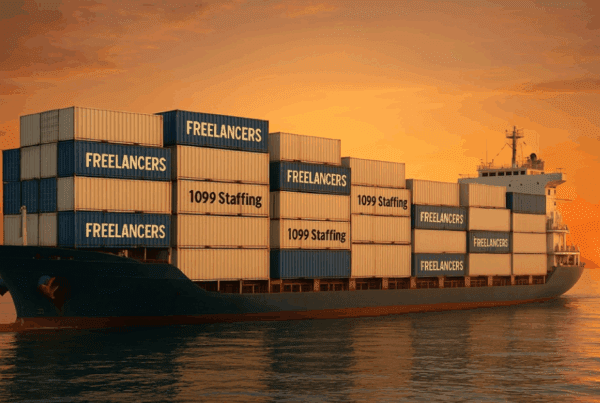
The workforce is growing out of its need for agencies, and doing so at an alarming rate.
Agency decay isn’t anything new, but the COVID-19 pandemic has accelerated it the past year, leading people to question the value they are getting out of hiring an agency. Once praised for being affordable marketing services for companies, agencies are now the expensive model. Flexible talent has grown steadily since 2009, with 2020 seeing an explosion in independent contract workers.
Companies are learning it is cheaper to use niche, skilled, independent workers. When companies hire contractors, they’re not paying for agency overhead, employee salaries, and bonuses, a hefty salary for the boss, and more. They’re getting exactly what they pay for with flexible talent, whether it’s a flat or hourly rate.
But overall cost isn’t the only reason why agencies are struggling to stay afloat. The model we know today is extremely outdated and goes against the way our workforce has evolved. And these signs were visible nearly a decade ago.
Agency decline has been in the works for years
Years before we heard of COVID-19, industry leaders warned us of an emerging trend. Whispers about the deflating model began around 2013, with a Harvard Business Review article making predictions on what the future of agencies will look like.
The article points out agency simplicity and stale model as a reason for agency downturn. Additionally, it focuses on incorporating lean practices in the workplace and how content as media will rule the digital landscape, citing blogs, podcasts, and social media as the tech and trends that are changing agencies.
A year later, this Guardian article predicts where we are today. Seven years ago, writer Tom Goodwin identified a big disconnect between agency and client that is still a problem in 2021:
“A glance at advertising agencies’ websites and their case studies show our center of gravity is smaller than ever. It seems a world of cheap media, production, and talent has led to a deflation in ambition. We see a landscape of small-scale social media campaigns, a plethora of videos each liked five or six times, user-generated competitions with a handful of entries, hashtags used by a few people for a few days for a small foray into real-time marketing.”
The problem is that agencies have seen these trends coming their way, but not putting a contingency plan in place that focuses on evolution and growth.
Agencies don’t have to die, but they do have to adapt.
The same issues are happening throughout agencies
As Goodwin mentioned in his 2014 article, agencies are, well, a mess.
UX Collective did research on traditional agency Glassdoor reviews and found common themes throughout, including bad leadership, poor communication, employees that are worked too thin and prioritizing profits over people. Below are three key reasons why agencies aren’t attracting the talent they used to:
- Leadership
-
-
- Fifty-seven percent of people who quit their jobs do so because of their boss
- In agencies, leadership is often flawed, with ex-employees citing poor communication and lack of a larger vision as reasons to jump ship
- Profit over people
- Employees are viewed as a commodity, are underappreciated, and overworked
- Focus on attracting clients before determining agency bandwidth, leading to overworked employees
- Agency leaders take a cut from employee work
-
- Inconsistencies
-
- When there is flawed leadership and poor communication within an agency, inconsistencies are guaranteed
- Client and employee frustrations due to lack of uniformity
Likewise, Digiday spoke to seven ex-agency employees on why they left. A couple people said they felt stagnant in a never-evolving agency format and some cited poor work-life balance. One source realized it was time to leave when he was afraid of asking his employer for paternity leave. When employees frequently run into these types of work situations, they’re likely to cut their company tenure short.
Agencies no longer offer the same value
Companies utilized the agency model for decades because hiring an agency has always been cheaper than hiring in-house talent – until now.
Our professional needs have outpaced what agencies offer and now clients are struggling with agency prices outweighing the quality. To gain a competitive edge, experts recommend focusing on client value, which includes efficiency, open communication and value adds.
These types of services are separate from the agency’s core offerings but can be added on to enhance those offerings. Strong customer service, free webinars for clients, and sending clients industry news are a few examples of how an agency can add value.
As agencies face their current challenges, value adds are necessary to survival.
You don’t know who is working on your projects
At agencies, clients typically work through one person: the project manager.
Often, clients are never introduced to the people performing work for them. There is no personal relationship with the writer blogging in the executive’s voice or the designer that brings marketing materials to life.
Like the game “telephone,” messages passed down from one person to another and then another often lose necessary details. When those details aren’t addressed due to how communication is passed down, clients are not satisfied.
As a solution, clients are going the flexible talent route, connecting with one niche expert they can communicate with directly and receive higher-quality work.
Companies can manage marketing in-house
Resources to learn social media and digital marketing are available and easily accessible.
Hootsuite offers a social media certification, Google offers free analytics training and HubSpot has many courses related to business and digital marketing to sift through.
A simple social media strategy can be managed by one person and if a business is ok with a stripped-down social media approach, this is something that can be given to an individual or two. A pay bump for a new responsibility is much more fiscal than a full-time hire.
If the in-house approach works for a company’s needs, leadership should determine which training resources are best for their employees and cover any training costs involved.
What are companies doing instead?
Businesses are cutting right through agency fat and getting straight to the meat by hiring independent contractors. These are individuals who are experts in their field, which is often niche and outsourced. With contractors, business leaders are able to communicate directly, cut out agency operating fees that are built into retainers, and have a specialist who knows exactly what they’re doing.
It’s a trend that has been growing steadily for more than a decade but has seen a boost thanks in part to the COVID-19 pandemic. From April to June 2020, the contract job market grew by more than 20 percent. between April to June 2020.
As a result, we are seeing an emergence of flexible-talent platforms like FlexTal, Fiverr, and Upwork. These platforms match clients with elite talent, cutting down the time it takes to search and hire talent, and that includes agencies. And they’re growing fast. In 2009, there were roughly 80, now there are 330. Most of that growth happened in just the past five years and the model is primed to cement itself as the future of work.
With the workforce moving at a COVID-accelerated rate, agencies need to adapt or get out.
FlexTal is the #1 flexible talent matching platform. Every day, we match organizations with pro-level independent contractors for flexible hourly and project-based engagements. Match with the Right Pro, Right Now.



